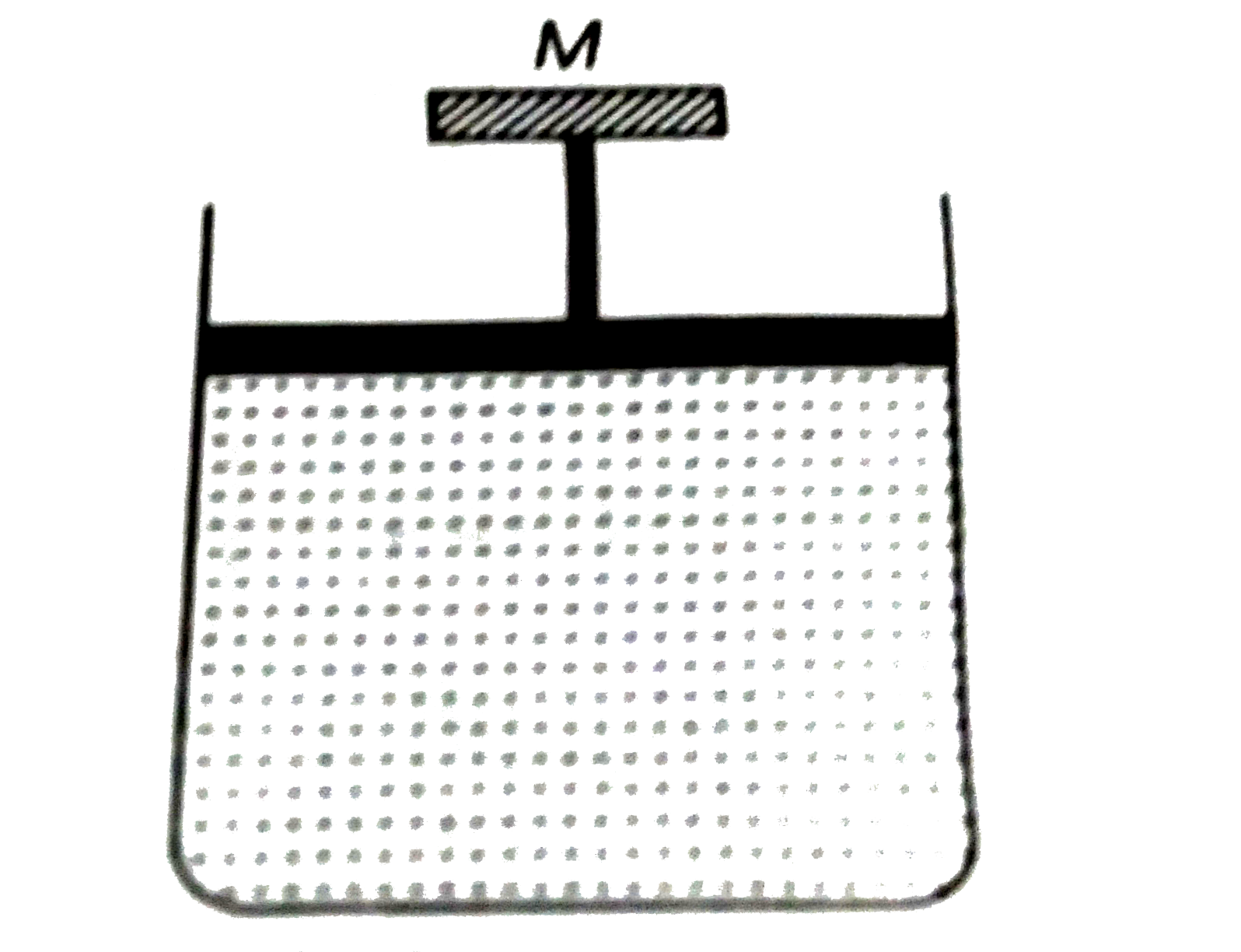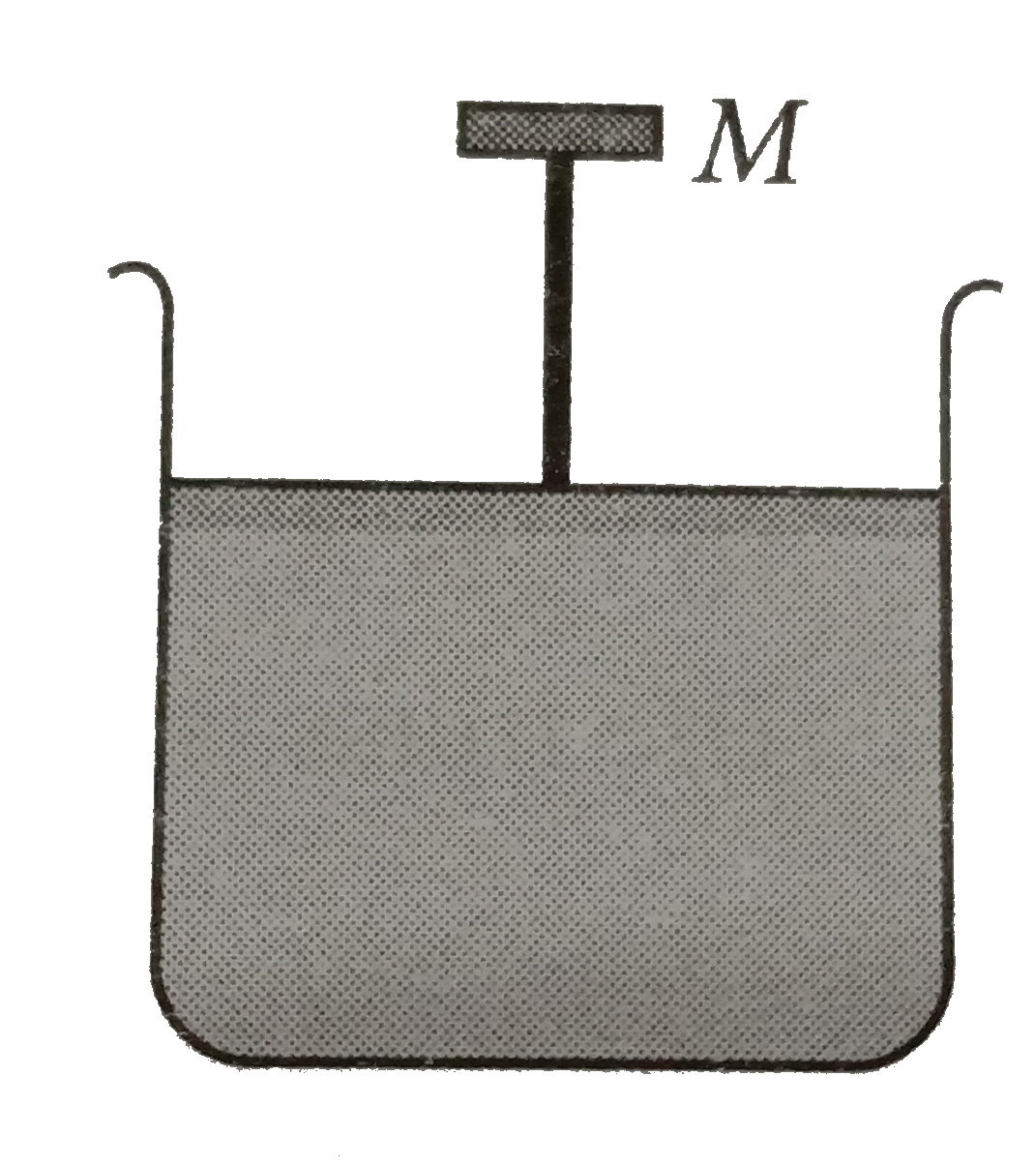A conducting container containing an ideal gas (He) is kept in ice-water mixture for long time. Now the piston is suddenly moved up so that its volume becomes eight times. Final temperature of gas will be:
273 K
2732K
2734K
27332K
The correct Answer is:C
To solve the problem, we need to determine the final temperature of the helium gas after the volume has been increased to eight times its original volume. We will use the principles of thermodynamics, specifically the adiabatic process.
1. Identify the Initial Conditions:
- The gas (He) is kept in an ice-water mixture, which means it is at a constant temperature of 0°C (273 K).
2. Understand the Process:
- The piston is suddenly moved, which indicates that the process can be approximated as an adiabatic process. In an adiabatic process, there is no heat exchange with the surroundings.
3. Use the Adiabatic Condition:
- For an adiabatic process, the relationship between temperature and volume is given by:
T1Vγ−11=T2Vγ−12
- Here, T1 and T2 are the initial and final temperatures, and V1 and V2 are the initial and final volumes, respectively. The value of γ for a monoatomic gas (like helium) is 53.
4. Set Up the Equation:
- Since the final volume V2 is 8 times the initial volume V1, we can write:
V2=8V1
- Substitute this into the adiabatic condition:
T1Vγ−11=T2(8V1)γ−1
5. Simplify the Equation:
- Cancel Vγ−11 from both sides:
T1=T2⋅8γ−1
- Rearranging gives:
T2=T18γ−1
6. Substitute the Value of γ:
- Substitute γ=53:
T2=T1853−1=T1823
7. Calculate 823:
- 823=(23)23=22=4
- Thus, we have:
T2=T14
8. Substitute the Initial Temperature:
- The initial temperature T1 is 273 K:
T2=2734=68.25 K
Final Answer:
The final temperature of the gas after the piston is moved is 68.25 K.
- The gas (He) is kept in an ice-water mixture, which means it is at a constant temperature of 0°C (273 K).
- The piston is suddenly moved, which indicates that the process can be approximated as an adiabatic process. In an adiabatic process, there is no heat exchange with the surroundings.
- For an adiabatic process, the relationship between temperature and volume is given by:
T1Vγ−11=T2Vγ−12
- Here, T1 and T2 are the initial and final temperatures, and V1 and V2 are the initial and final volumes, respectively. The value of γ for a monoatomic gas (like helium) is 53.
- Since the final volume V2 is 8 times the initial volume V1, we can write:
V2=8V1
- Substitute this into the adiabatic condition:
T1Vγ−11=T2(8V1)γ−1
- Cancel Vγ−11 from both sides:
T1=T2⋅8γ−1
- Rearranging gives:
T2=T18γ−1
- Substitute γ=53:
T2=T1853−1=T1823
- 823=(23)23=22=4
- Thus, we have:
T2=T14
- The initial temperature T1 is 273 K:
T2=2734=68.25 K
The final temperature of the gas after the piston is moved is 68.25 K.
Topper's Solved these Questions
Similar Questions
A cylinder containing an ideal gas is in vertical position and has a piston of mass M that is able to move up or down without friction (figure). If the temperature is increased
 View Solution
View SolutionA cylinder containing an ideal gas is in verticle postion and has a piston of mass M that is able to move up of down without friction. It the temperature is increased,
 View Solution
View Solution
Knowledge Check
- Question 1 - Select One
A cylinder containing an ideal gas is in vertical position and has a piston of mass M that is able to move up or down without friction (figure). If the temperature is increased
 Aboth P and V of the gas will changeBonly P will increase according to Charle's law.CV will change but not PDP will change but not V
Aboth P and V of the gas will changeBonly P will increase according to Charle's law.CV will change but not PDP will change but not V
A gas in a vessel is heated in such a way that its pressure and volume both becomes two times. The temperature of the gas expressed in Kelvin scale becomes
View SolutionA gas is contained in a metallic cylinder fitted with a piston.the piston is suddenly moved in to compress the gas and is maintained at this position. As time passes the pressure of the gas in the cylinder
View SolutionA gas is contained in a metallic cylinder fitted with a piston.The piston is suddenly moved in to compress the gas and is maintained at this position. As time passes the pressure of the gas in the cylinder
View SolutionA gas is contained in a metallic cylinder fitted with a piston.The piston is suddenly moved in to compress the gas and is maintained at this position. As time passes the pressure of the gas in the cylinder
View SolutionComprehension-2
A mono atomic ideal gas is filled in a non conducting container. The gas can be compressed by a movable non conducting piston. The gas is compressed slowly to 12.5% of its initial volume.
The percentage increases in the temperature of the gas isView SolutionInitial volume of H2 gas saturated with water vapour is confined under a piston in a container is 10 litres as shown in the given figure.

the container also contains some liquid water. The total pressure over liquid water is 80cm of Hg. If now the piston is removed such that volume of container is doubled, then final total pressure over liqid water in the container is P. The vapour pressure of water is 20cm of Hg and volume of liquid is negligible. Calculate P/10.........View SolutionA cylinder fitted with a piston contains an ideal monoatomic gas at a temperature of 400K. The piston is held fixed while heat ΔQ is given to the gas, it is found the temperature of the gas has increased by 20K. In an isobaric process the same ΔQ heat is supplied slowely to it. Find the change in temperature in the second process?
View Solution

